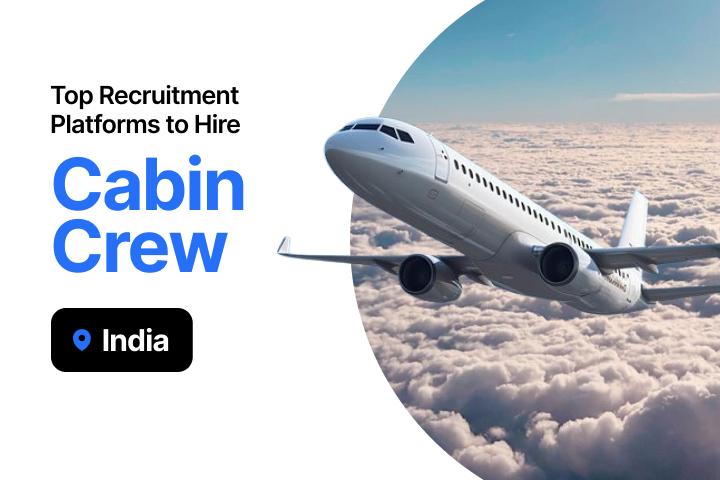Onboarding is a pivotal step in ensuring the success of new hires in the aviation industry. A 2023 survey by Aviation HR Insights revealed that over 70% of aviation companies that implemented a structured onboarding process saw a 30% increase in employee retention.
Proper onboarding prepares new hires to meet the high standards of the aviation sector, which requires adherence to stringent employment contracts, delivering excellent customer service, and maintaining efficient operations.
A well-designed onboarding program not only facilitates smoother transitions for new employees but also accelerates their ability to make effective contributions to their roles.
Key Onboarding Challenges in Aviation
Onboarding in the aviation industry comes with several challenges due to the high standards of safety, the complexity of operations, and the fast-paced work environment. New employees must adapt quickly to the industry’s technical demands, working hours and overtime, and team-oriented roles while navigating the pressures of high turnover and rapid hiring.
Common Challenges New Employees Face
The aviation industry’s fast-paced environment, coupled with strict safety and operational standards, creates challenges for new employees, including adapting to new technology, regulatory requirements, and understanding specific industry terminology.
Adapting to Industry-Specific Terminology and Technology
New hires must quickly learn industry-specific language and understand complex technology, such as flight scheduling tools, air traffic control systems, and communication methods used in aviation operations.
Meeting Strict Safety and Compliance Standards
Safety protocols are critical in aviation. New employees must learn and adhere to detailed emergency procedures and compliance expectations, which are integral to their roles.
High Turnover and Rapid Hiring Needs
With high turnover, especially in entry-level roles, aviation companies are constantly onboarding new staff. Employers must balance the need for quick hiring with the need to maintain thorough training and safety standards.
Effective Communication in Team-Oriented Roles
Aviation relies on teamwork for smooth operations. New hires must understand how to communicate effectively with colleagues, including ground staff, flight attendants, and air traffic controllers, to ensure safe coordination.
Balancing the Pace of Onboarding with Job Requirements
The challenge lies in ensuring that new hires are onboarded quickly while still meeting the high standards required in aviation. Training must be fast but thorough, ensuring no corners are cut when it comes to operational efficiency and legal regulations.
Best Practices for Onboarding New Aviation Professionals
Pre-boarding Preparation
Pre-boarding plays a significant role in helping new hires feel prepared and confident. Before day one, it’s essential to send a welcome email that includes the new hire’s schedule, instructions on how to access training portals, and any initial paperwork that needs to be completed. Ensuring that all system access, including email accounts, logins, and employee onboarding documents, is in place beforehand can make day one less stressful.
Pre-boarding should also include a clear overview of what the first few weeks will look like. This could involve safety briefings, meeting key team members, and a breakdown of the training schedule. Setting expectations early helps reduce anxiety and gives new hires a sense of control.
Orientation and Training
Orientation and training in aviation should start with an introduction to the company’s mission and culture. Since the aviation industry is both customer-facing and compliance-heavy, aligning with these values is crucial. Then comes role-specific instruction. For instance, flight attendants learn emergency drills and cabin safety standards, while pilots focus on simulators and aircraft systems.
Role-based training must be rigorous. This can include classroom instruction, simulations, or real-world practice. Shadowing programs with experienced staff can help accelerate learning and improve retention.
Technology and Tools
Aviation companies use a wide range of operational platforms. These include crew management software, learning portals, and real-time communications tools. Introducing new hires to these platforms early including flight management systems or logistics platforms for ground staff, improves onboarding outcomes.
New pilots, for example, must be familiar with tools that handle scheduling and compliance. Ground staff should be introduced to systems for luggage tracking and passenger flow. Training platforms should support this with real-time scenarios and interactive walkthroughs.
Leveraging Technology in Onboarding
AI-driven onboarding tools, VR-based training, and digital simulations are changing how the aviation sector trains staff. Virtual training platforms are particularly useful for remote employees or hybrid schedules. These platforms speed up training while ensuring consistency and compliance.
Chatbots and virtual assistants can handle FAQs, distribute safety documentation, and automate key tasks. These technologies make onboarding scalable and tailored to each role.
Measuring Onboarding Success
To track performance and satisfaction, surveys should be conducted at the end of each onboarding phase. These collect feedback on training content, communication flow, and team dynamics. New employees should feel supported and informed, if not there’s room to improve the employee experience.
Additionally, companies can use KPIs such as time-to-productivity or compliance completion rates. A pilot might be required to log a certain number of simulator hours within a week, while a flight attendant may need to pass all emergency protocols before their first flight.
Conclusion
An effective onboarding process in aviation combines structure, culture, and speed. With pre-boarding, role-specific training, and digital support tools, companies can ensure smooth transitions and long-term retention. Done right, onboarding reduces risk, boosts confidence, and ensures new employees are ready for the runway from day one.
Frequently Asked Questions
What are the best practices for onboarding in aviation?
Best practices include structured pre-boarding, comprehensive role-specific training, and the use of technology to streamline learning and support new hires.
What tools help streamline the onboarding process in aviation?
Tools like Flight Operations Management Software, AI-powered ATS, and virtual training platforms are key to streamlining the onboarding process in aviation.
How long should the onboarding process take in aviation?
The onboarding process in aviation can take anywhere from a few weeks to a couple of months, depending on the complexity of the role (e.g., pilot training vs. cabin crew orientation).
What challenges should employers expect when onboarding new hires in aviation?
Challenges include managing the technical complexity of roles, ensuring new hires meet stringent safety regulations, and providing hands-on training in a fast-paced environment.



.webp)
